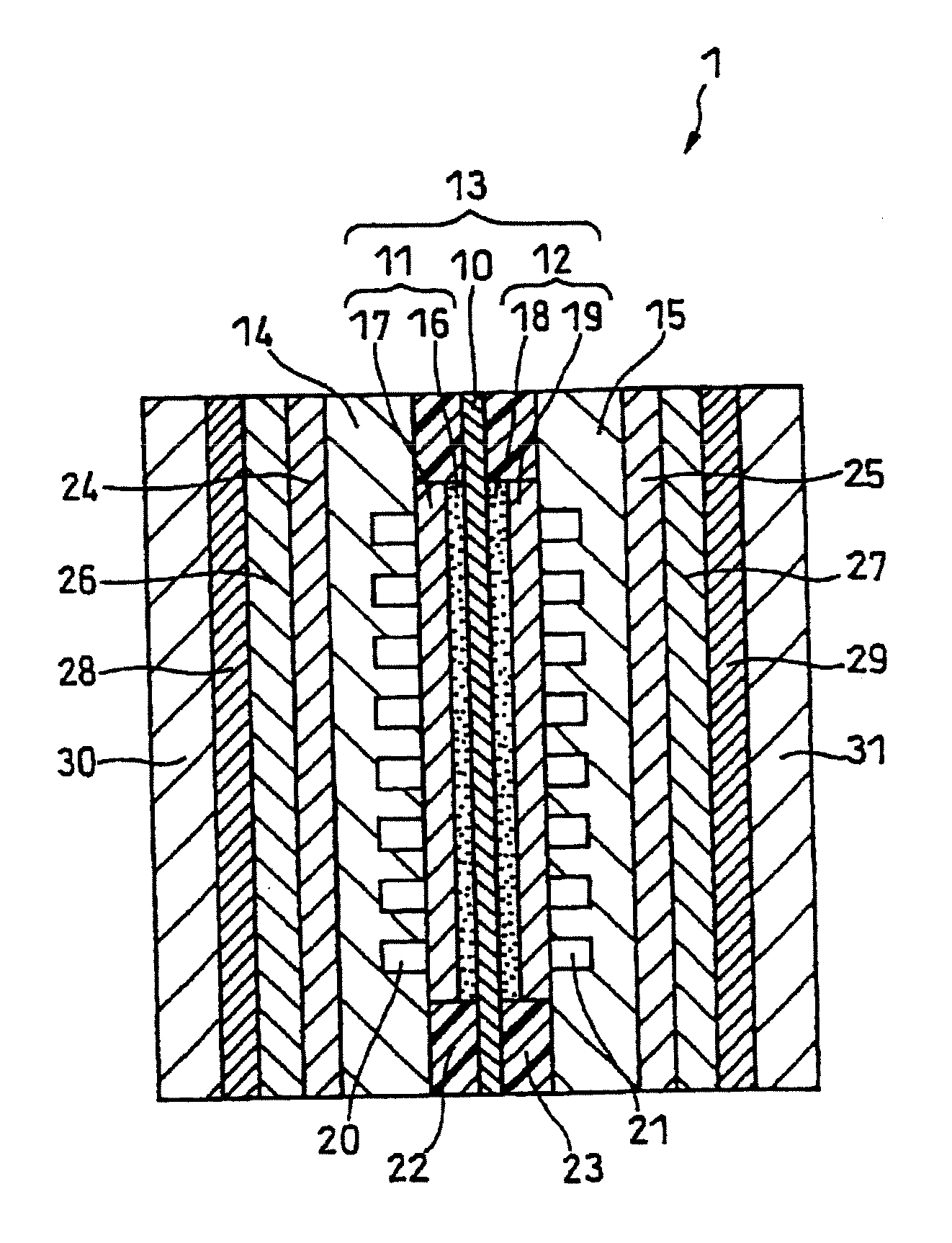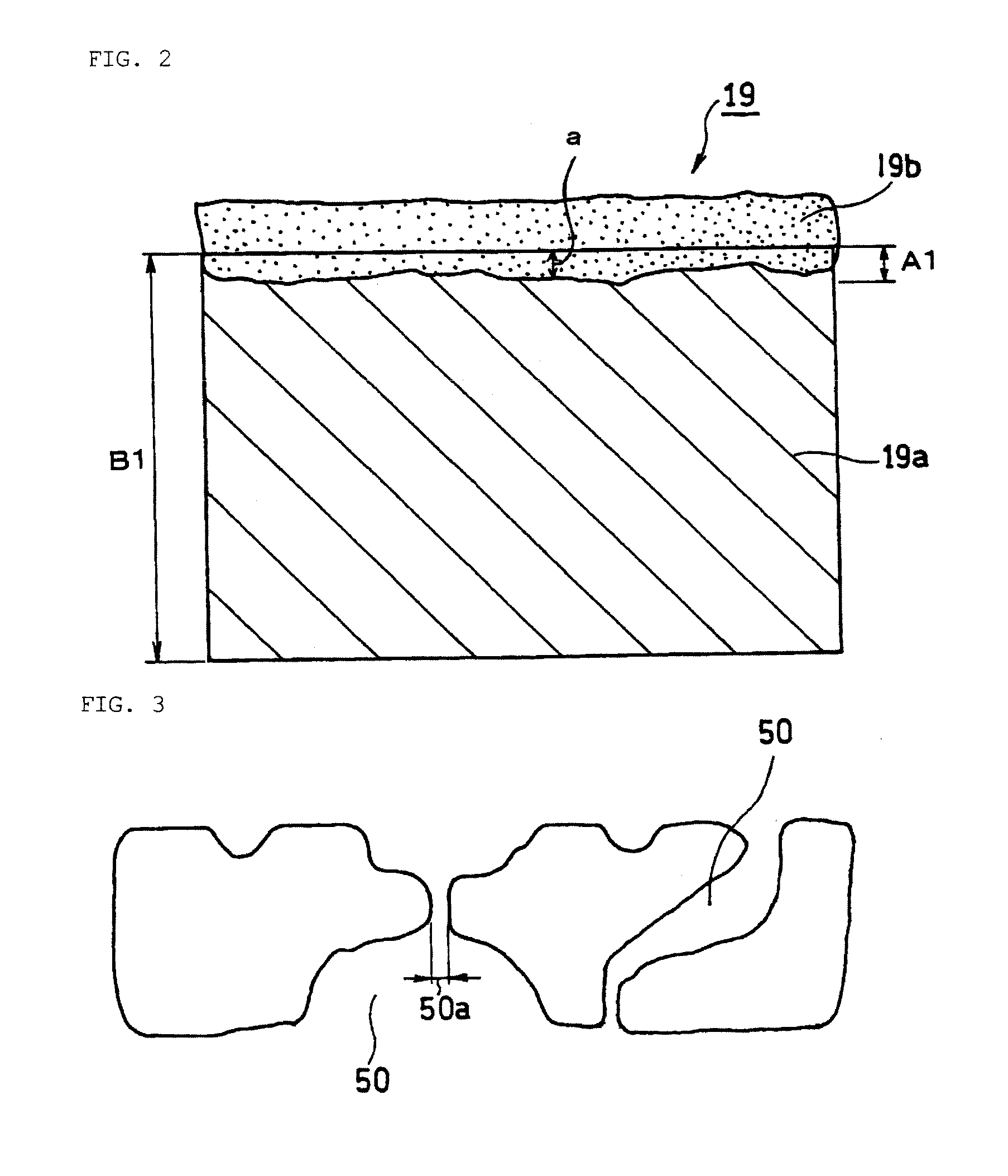Membrane electrode assembly for fuel cell and fuel cell using the same
a fuel cell and membrane electrode technology, applied in the direction of solid electrolyte fuel cells, fuel cells, cell components, etc., can solve the problems of initial deterioration of power generation performance, overvoltage of cathodes, and problems such as the inability to use direct oxidation fuel cells such as dmfcs, and achieve good durability and sufficient oxidant gas diffusion
- Summary
- Abstract
- Description
- Claims
- Application Information
AI Technical Summary
Benefits of technology
Problems solved by technology
Method used
Image
Examples
example 1
[0109]A fuel cell as illustrated in FIGS. 1 and 2 was produced.
(Preparation of Anode Catalyst Layer)
[0110]Pt—Ru alloy fine particles with a mean particle size of 3 nm (Pt:Ru weight ratio=2:1) were used as the anode catalyst.
[0111]The anode catalyst was ultrasonically dispersed in an aqueous solution of isopropanol. To the resulting dispersion was added an aqueous solution containing 5% by weight of a polymer electrolyte. The resulting mixture was stirred with a disperser to prepare an anode catalyst ink. The weight ratio of the Pt—Ru alloy fine particles to the polymer electrolyte in the anode catalyst ink was set to 3:1. The polymer electrolyte used was a perfluorocarbon sulfonic acid ionomer (Flemion available from Asahi Glass Co., Ltd.).
[0112]Subsequently, the anode catalyst ink was applied onto a predetermined region of a surface of an electrolyte membrane 10 by using a spray coater and then dried to form an anode catalyst layer 16 with a size of 6 cm×6 cm. The amount of the Pt—...
example 2
[0131]A fuel cell B was produced in the same manner as in Example 1, except that in the preparation of a cathode diffusion layer, the amount of the porous composite layer per projected unit area was set to 0.9 mg / cm2. The amount of the porous composite layer was adjusted by decreasing the set gap of the doctor blade for applying the paste for forming the cathode porous composite layer onto a conductive porous substrate surface.
example 3
[0132]A fuel cell C was produced in the same manner as in Example 1, except that in the preparation of a cathode diffusion layer, the amount of the porous composite layer per projected unit area was set to 2.6 mg / cm2. The amount of the porous composite layer was adjusted by increasing the set gap of the doctor blade for applying the paste for forming the cathode porous composite layer onto a conductive porous substrate surface.
PUM
 Login to View More
Login to View More Abstract
Description
Claims
Application Information
 Login to View More
Login to View More - R&D
- Intellectual Property
- Life Sciences
- Materials
- Tech Scout
- Unparalleled Data Quality
- Higher Quality Content
- 60% Fewer Hallucinations
Browse by: Latest US Patents, China's latest patents, Technical Efficacy Thesaurus, Application Domain, Technology Topic, Popular Technical Reports.
© 2025 PatSnap. All rights reserved.Legal|Privacy policy|Modern Slavery Act Transparency Statement|Sitemap|About US| Contact US: help@patsnap.com



